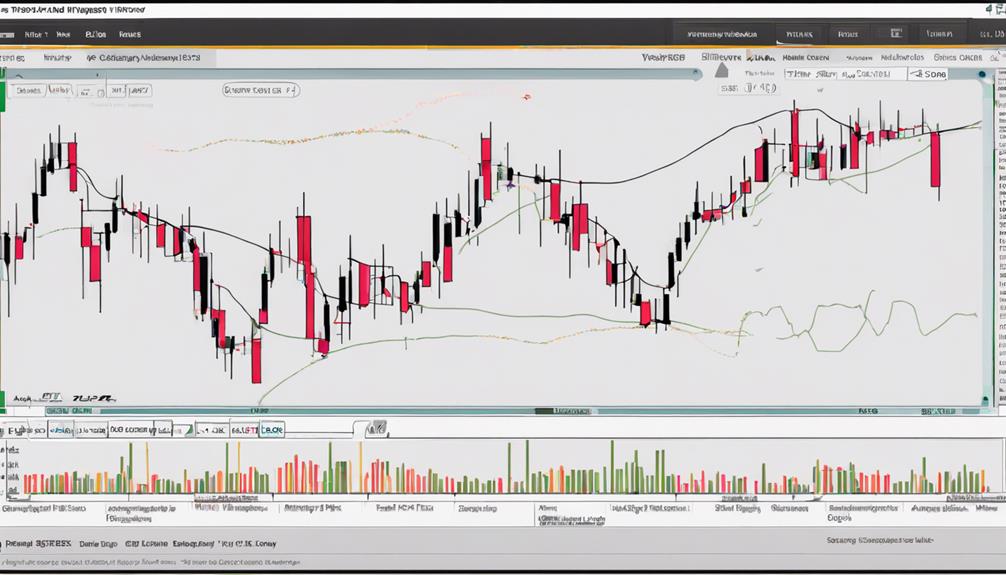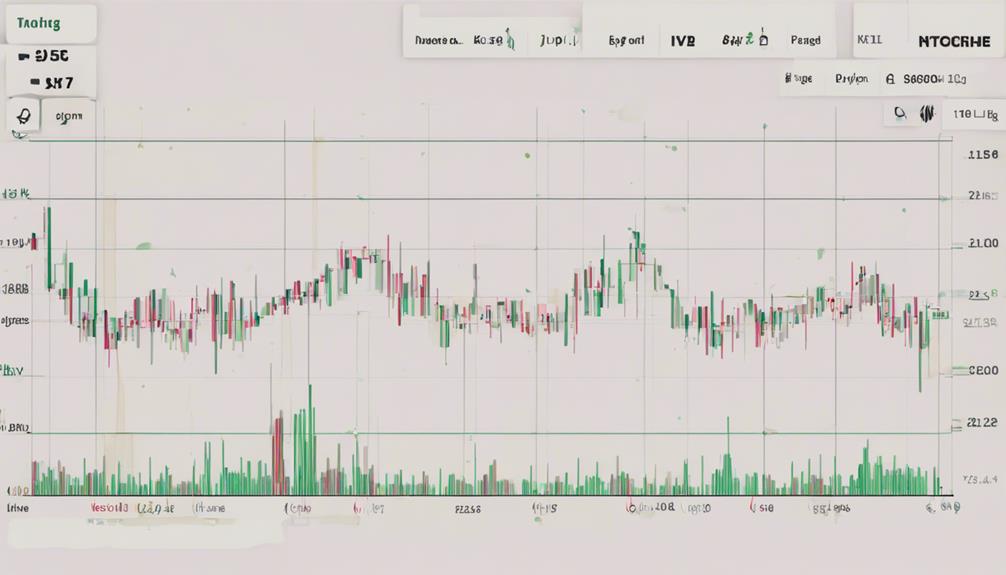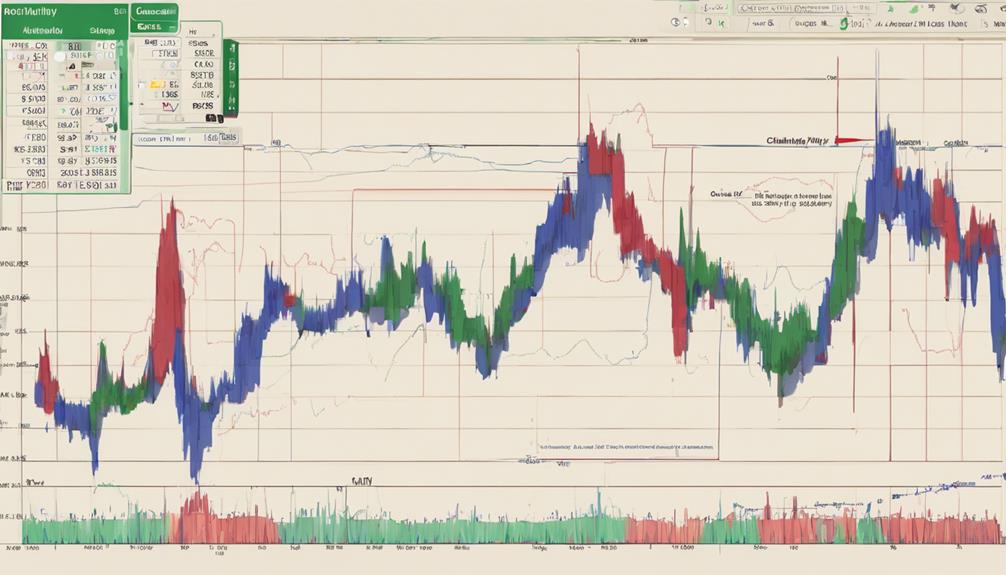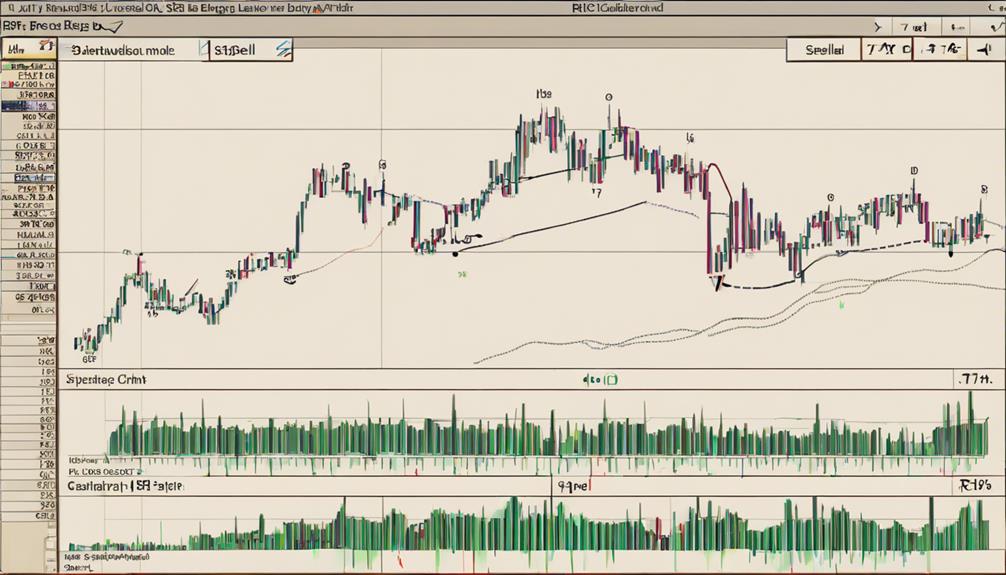Navigating volatility indicators requires a strategic approach that goes beyond mere observation. By examining tools like the ATR and analyzing indicators such as the Volatility Stop Indicator, traders can gain valuable insights into market dynamics and potential price movements.
However, grasping these indicators' nuances and effectively incorporating them into trading strategies is where the real challenge lies. This step-by-step guide aims to provide traders with a comprehensive understanding of how to interpret and utilize various volatility indicators, offering a roadmap for enhancing decision-making processes in the ever-changing landscape of financial markets.
Understanding Average True Range (ATR)
Average True Range (ATR) is a key technical indicator utilized to gauge market volatility by computing the average price movement range over a specified timeframe. Developed by J. Welles Wilder Jr., ATR is widely employed in technical analysis to assess the volatility of a market.
Traders rely on ATR to understand the potential price range within which an asset might fluctuate. By interpreting ATR values, traders can make informed decisions regarding setting stop loss and take profit levels. A higher ATR value signifies increased volatility, indicating larger price fluctuations, while a lower ATR value suggests decreased volatility with more stable price movements.
This information is crucial for traders aiming to navigate the market efficiently and effectively. ATR aids in identifying the strength of a trend and assists traders in adjusting their strategies based on the prevailing market conditions. Understanding ATR is fundamental for traders seeking to enhance their risk management practices and capitalize on market opportunities.
Calculating Bollinger Bands

Utilizing a 20-day moving average and two standard deviations, Bollinger Bands are calculated to assist traders in analyzing market volatility dynamics.
The upper band is established by adding two standard deviations to the moving average, while the lower band is determined by subtracting two standard deviations from the moving average. These bands serve as dynamic levels that expand and contract in response to market volatility, providing traders with a visual representation of price volatility.
By monitoring the Bollinger Bands, traders can identify potential overbought conditions when prices touch or exceed the upper band and oversold conditions when prices reach or fall below the lower band. This ability to recognize extreme price levels relative to historical price action aids traders in making informed decisions regarding potential reversals or continuation of trends, enhancing their overall trading strategies.
The calculation and interpretation of Bollinger Bands are integral components of technical analysis for traders seeking to navigate market volatility effectively.
Interpreting Relative Vigor Index (RVI)

The Relative Vigor Index (RVI) serves as a valuable tool for traders, offering insights into the conviction behind price movements through a comparison of closing prices to the trading range. By analyzing the RVI values, traders can determine the strength of trends and potential reversals in the market. RVI values above 50 indicate bullish strength, suggesting a potential uptrend, while values below 50 signify bearish momentum, indicating a possible downtrend. This information can be crucial for traders looking to make informed decisions about market analysis and trade signals.
As a momentum oscillator, the RVI is instrumental in helping traders assess the strength of trends. Combining RVI with other indicators can provide a comprehensive view of the market and enhance the accuracy of trade signals. By interpreting the RVI accurately, traders can gain valuable insights into price movements, trend strength, and make informed trading decisions based on the signals provided by this indicator.
Analyzing Chaikin Volatility Indicator

Measuring the rate of price movement in a financial instrument, the Chaikin Volatility Indicator is a valuable tool for assessing market volatility dynamics. By calculating volatility based on the difference between high and low prices over a specified period, this indicator offers insights into the intensity of price movements.
High values generated by the Chaikin Volatility Indicator indicate a high level of volatility, signaling potential trading opportunities for investors. Conversely, low values suggest a period of lower volatility in the market. Traders utilize this information to make informed decisions about entry and exit points in trading activities.
Recognizing periods of increased volatility can help traders navigate the market more effectively, allowing them to capitalize on price fluctuations. Overall, the Chaikin Volatility Indicator serves as a crucial instrument in understanding market dynamics and identifying optimal trading strategies based on the prevailing levels of volatility.
Implementing RSI Oscillator

Navigating from the analysis of the Chaikin Volatility Indicator to the implementation of the RSI Oscillator, traders can leverage the Relative Strength Index (RSI) as a momentum oscillator to assess price movement dynamics and identify potential market conditions for strategic decision-making.
The RSI Oscillator, ranging from 0 to 100, helps traders pinpoint overbought conditions (above 70) and oversold conditions (below 30) in the market. By using the RSI Oscillator, traders can spot potential trend reversals, divergence between price movements and the oscillator, and levels indicating optimal entry and exit points for trades.
Customizing the RSI Oscillator with different periods, often 14, allows traders to align it with their preferred trading style and timeframe. Effectively interpreting signals from the RSI Oscillator involves analyzing crossovers, divergences, and extreme readings while incorporating other technical analysis tools for a comprehensive decision-making process.
Utilizing the RSI Oscillator as a part of the trader's toolkit enhances the ability to make informed decisions based on market conditions and price dynamics.
Can you provide a step-by-step guide on using volatility indicators?
If you’re new to trading, easytofollow volatility indicators guides can help you navigate the market. Start by understanding different volatility indicators like ATR and Bollinger Bands. Then, learn how to interpret the data and use it to make informed decisions. Practice with historical data to gain confidence in your skills.
Frequently Asked Questions
How Do You Use Volatility Indicators?
Volatility indicators are crucial tools for assessing market dynamics and trend strength. By utilizing indicators like ATR, Bollinger Bands®, RVI, Chaikin Volatility, CCI, and RSI Oscillator, traders can identify potential price movements, trends, and reversals with precision and confidence.
How Do You Navigate Market Volatility?
Navigating market volatility requires a strategic blend of risk management, trend analysis, and timely decision-making. By leveraging volatility indicators like ATR, Bollinger Bands®, RVI, Chaikin Volatility Indicator, CCI, and RSI Oscillator, traders can better interpret market dynamics and optimize trading strategies.
What Are the Strategies for Trading Volatility Indices?
Strategies for trading volatility indices involve mean reversion and breakout approaches, utilizing indicators like VIX, Bollinger Bands, and moving averages. Success hinges on careful planning, research, disciplined risk management, patience, and a commitment to continuous learning in this complex market environment.
What Is the Best Way to Measure Volatility?
Measuring volatility effectively involves utilizing indicators like Average True Range (ATR), Bollinger Bands, and Keltner Channels. These tools analyze price movements over specific periods, providing insights into market volatility levels crucial for adjusting trading strategies and managing risk efficiently.
Conclusion
In conclusion, mastering volatility indicators is akin to navigating through a turbulent sea with a precise compass. By understanding and utilizing tools like ATR, Bollinger Bands, RVI, CVI, and RSI Oscillator, traders can steer their way through market fluctuations with confidence and accuracy.
Just as a skilled sailor reads the wind and waves to chart a course, traders can use these indicators to effectively manage risk and make strategic decisions in the ever-changing landscape of the financial markets.
